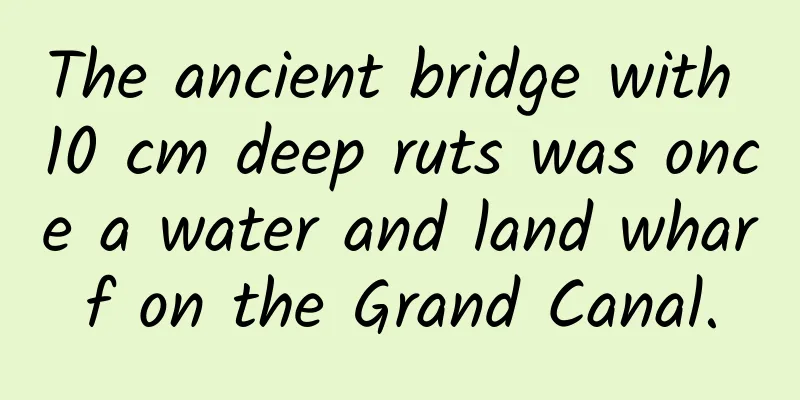To complete his research, he took clams that his daughter had picked up from the beach.

|
"Go to the hospital and get an MRI." Are there any friends who feel a little shocked when hearing this, and always feel that "MRI" is very harmful to the body. In fact, this "nuclear magnetic resonance", namely magnetic resonance imaging (MRI), uses the principle of nuclear magnetic resonance (NMR). Based on the different attenuation of the released energy in different structural environments inside the material, the emitted electromagnetic waves are detected by applying an external gradient magnetic field. The position and type of the atomic nuclei that make up the object can be known, and based on this, a structural image of the object's interior can be drawn. Magnetic resonance imaging of a longitudinal section of the human brain, source: Wikipedia The "nucleus" in MRI actually refers to the hydrogen nucleus. About 70% of the human body is made up of water, and this technology relies on the hydrogen atoms in the water. Considering patients' concerns and fears about "nuclei", doctors often call this technology "magnetic resonance imaging." Magnetic resonance imaging is commonly used in medicine to detect and diagnose heart disease, cerebrovascular accidents and vascular diseases; detect and diagnose diseases of the thoracic and abdominal organs; diagnose and evaluate, track the condition of tumors and functional disorders, and diagnose sports-related injuries. In addition, since there is no risk of radiation exposure, MRI is often used in the detection and diagnosis of diseases of the reproductive system, breast, pelvis and bladder. Compared with ordinary X-rays or computer tomography (CT), magnetic resonance imaging is one of the few clinical diagnostic methods that is safe, fast and accurate without any harm to the human body. The "greatest contributor" to this technology is Paul C. Lauterbur, an American chemist who won the 2003 Nobel Prize in Physiology or Medicine. Paul C. Lauterbur. Image source: Ganga Library Paul Lauterbur was born in Sidney, Ohio, in 1929. He received a Bachelor of Science degree from Case Institute of Technology in 1951 and a Ph.D. in Chemistry from the University of Pittsburgh in Philadelphia in 1962. From 1963 to 1984, Paul Lauterbur taught at Stony Brook University, State University of New York, as a professor of chemistry and radiology. He died on March 27, 2007 in Urbana, Illinois, USA, at the age of 77. Lauterbur developed a great interest in chemistry from an early age, and when he was a teenager, his parents helped him build his own laboratory in the basement. When he was in high school, his teacher allowed him and some like-minded classmates to complete their own experiments in class and granted them immunity from responsibility if the experiments went wrong. They have the "freedom to experiment" at a young age. It was these experiences in his youth that enabled him to maintain a keen interest and unremitting efforts in chemical research in the future. Napkin doodles Such advanced research as magnetic resonance imaging was originally born on a small napkin. While a researcher at the Mellon Institute for Industrial Research, Lauterbur was having a brainstorming session at a restaurant in the suburbs of Pittsburgh and scribbled the first model of an MRI on a napkin. NMR (nuclear magnetic resonance) is the scientific principle behind MRI, and its discoverers, Felix Bloch and Edward Purcell, were awarded the Nobel Prize in Physics in 1952. However, for the next few decades, magnetic resonance was used mainly to study the chemical structure of matter, until Lauterbur and Peter Mansfield developed this research in the 1970s, allowing nuclear magnetic resonance to be used to produce images of the body. Late night experiment While teaching at Stony Brook University as a professor of chemistry and radiology, Lauterbur devoted his research to nuclear magnetic resonance spectroscopy and its applications. Before him, most scientists placed the sample in a uniform magnetic field, and radio signals were excited from the entire sample. But Lauterbur realized that if an inhomogeneous magnetic field was used, radio signals could also be excited from different areas of the sample, potentially producing a two-dimensional image. The SUNY NMR machine was shared by chemistry professors, who performed their measurements in a uniform magnetic field, so Lauterbur had to conduct his research at night and return the machine to its original settings the next morning. Such "burning the midnight oil" laid the foundation for Lauterbur's research. Submit with "clams" After the experiment was successful, the first photos Lauterbur took included a 4-millimeter-diameter clam collected by his daughter on the beach of Long Island Sound, green peppers, and two test tubes of heavy water in ordinary beakers (the last item is particularly important because the human body is mostly made up of water). Later, Lauterbur published his paper and his findings in the journal Nature for the first time, but the editor of the journal rejected his request because the pictures in the paper were too blurry. However, Lauterbur did not give up and continued his research. After he repeatedly asked the publisher to review it again, the paper was published. Later, the journal Nature rated the paper as one of the classic papers. Two-thirds of the human body is water, and this high proportion is the basis for the widespread use of magnetic resonance imaging technology in medical diagnosis. The water content of various organs and tissues in the human body is different, and the pathological process of many diseases will cause changes in the form of water, which can be reflected in magnetic resonance images. On October 6, 2003, the Karolinska Institute in Sweden announced that Paul Lauterbur and Peter Mansfield were awarded the 2003 Nobel Prize in Physiology or Medicine in recognition of their groundbreaking achievements in medical diagnosis and research. The popularization of this technology has saved the lives of many patients. Modern clinical high-field (3.0T) MRI scanner, source Wikipedia The emergence of new medical technologies is undoubtedly good news for all mankind, and the scientists behind the technology are the creators of the good news. The scientific universe is vast, and the spirit of exploration of scientists is as bright as the stars in the universe. Their obsession and dedication to scientific research deserve our remembrance and praise. END Editor/Heart and Paper |
<<: You have no idea how ridiculous the reasons why you gain weight are...
>>: What exactly is the mysterious creature “Water Monkey”?
Recommend
The highly profitable money-making project of separating the mistress can earn at least tens of thousands per order
Today's society is open enough and more empha...
Shine! Chinese Treasures ①丨The history of "China" is longer than you think
The word "China" refers to both China a...
The first cosmic velocity is 7.9 kilometers per second. Can we reach this speed to leave the earth? No
The first cosmic velocity is 7.9 kilometers per s...
Jules Verne's novel predicted air warfare half a century in advance
Editor's Note Military science fiction has a ...
What about hardware improvements? Is the new iPod touch worth buying?
In the past two days, two news stories have conti...
Website optimization SEO for the Qing Palace Diagram to predict the gender of the baby, a project to make a fortune quietly!
Ever since my wife became pregnant, people around...
Core Consulting: Light Commercial Vehicle Market Forecast Research Report in June 2023
1. Industry Insights Remotely launch two new prod...
When is the closing ceremony of the 2022 Two Sessions? What are the good policies for agriculture, rural areas and farmers after the end?
Currently, the two sessions of the National Peopl...
Li Xiaoyue's Xiaohongshu full-level short video training camp, 30-day community training camp
Li Xiaoyue's Xiaohongshu full-level short vid...
IC Insights: Global IoT Device Market Size Expected to Reach $62.4 Billion in 2015
According to the latest forecast report from mark...
Domestic cars are overtaking joint venture brands, and new energy battery services have become a landmark turning point
Thanks to the booming new energy industry, Chines...
How to develop an online event planning plan?
Even those who are just starting out in operation...
Well-known online disk BOX.COM exposed a vulnerability, file sharing can be searched by search engines
Recently, the well-known online data management we...









